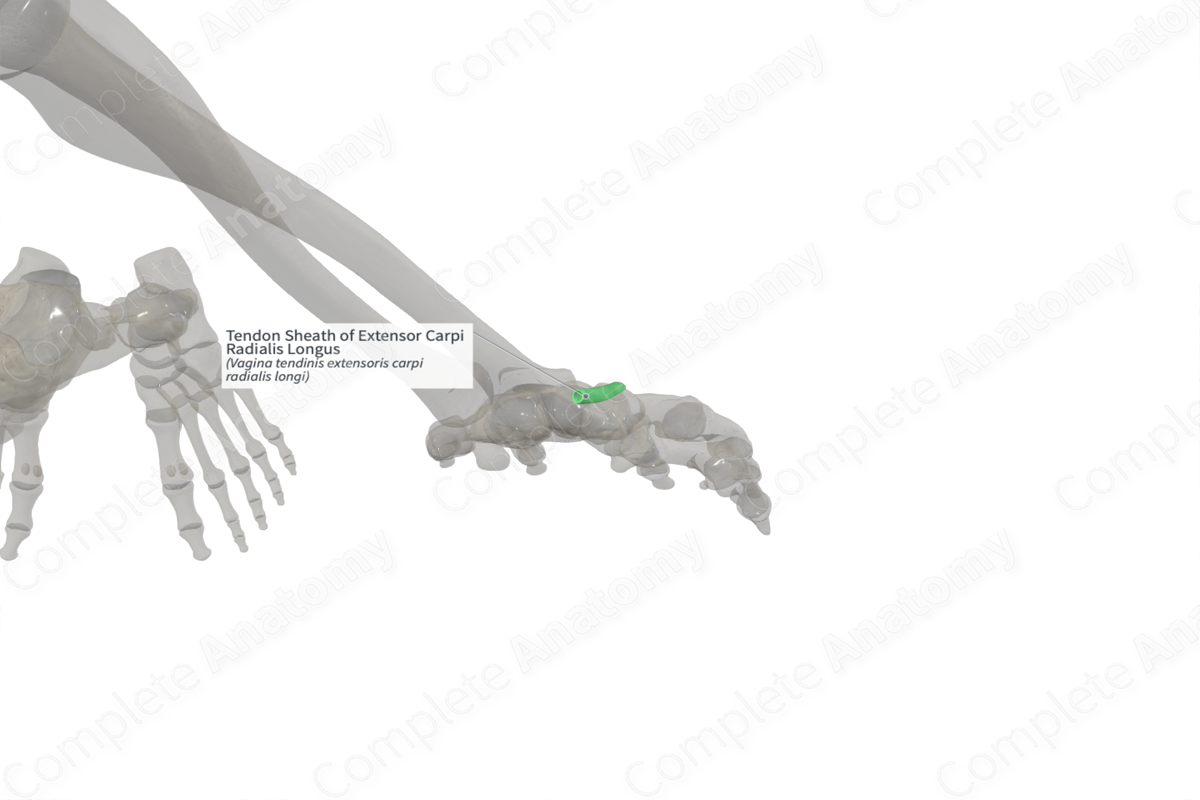
Tendon Sheath of Extensor Carpi Radialis Longus (Right)
Vagina tendinis extensoris carpi radialis longi
Read moreTendon Sheath of Extensor Carpi Radialis Longus (Right) Anatomical Relations
The tendon sheaths of the extensor carpi radialis longus and brevis pass deep to the extensor retinaculum in a single tunnel, lateral to the dorsal tubercle of the radius. The extensor carpi radialis longus sits lateral to the extensor carpi radialis brevis (Standring, 2016).
Distal to the extensor retinaculum, the tendinous sheath of the extensor pollicis longus crosses over the tendinous sheaths of the extensor carpi radialis longus and brevis.
The tendon sheaths of the extensor carpi radialis longs and brevis continue as far as the proximal bases of the metacarpals; the tendons then emerge and insert into the base of the second and third metacarpals.
Related parts of the anatomy
Tendon Sheath of Extensor Carpi Radialis Longus (Right) Structure
The tendon sheath of the extensor carpi radialis longus has an outer fibrous component and an inner double layered sheath of synovial membrane that is akin to a longitudinal bursa. The synovial layer is composed of an inner visceral layer and an outer parietal layer. The synovium produces a thin layer of lubricating fluid between the visceral and parietal layers which surround the tendons.
Tendon Sheath of Extensor Carpi Radialis Longus (Right) Function
The tendon sheath of the extensor carpi radialis longus muscle provides a well-lubricated, smooth surface that reduces friction during movements of the tendons.
Tendon Sheath of Extensor Carpi Radialis Longus (Right) List of Clinical Correlates
—Tendovaginitis
Tendon Sheath of Extensor Carpi Radialis Longus (Right) References
Standring, S. (2016) Gray's Anatomy: The Anatomical Basis of Clinical Practice. Gray's Anatomy Series 41st edn.: Elsevier Limited.
Learn more about this topic from other Elsevier products
Tendon Sheath

Tenosynovectomy refers to the excision of thickened tendon sheath and other tissue surrounding a tendon, commonly seen in infection, chemical irritation, and rheumatoid arthritis (synovectomy).




